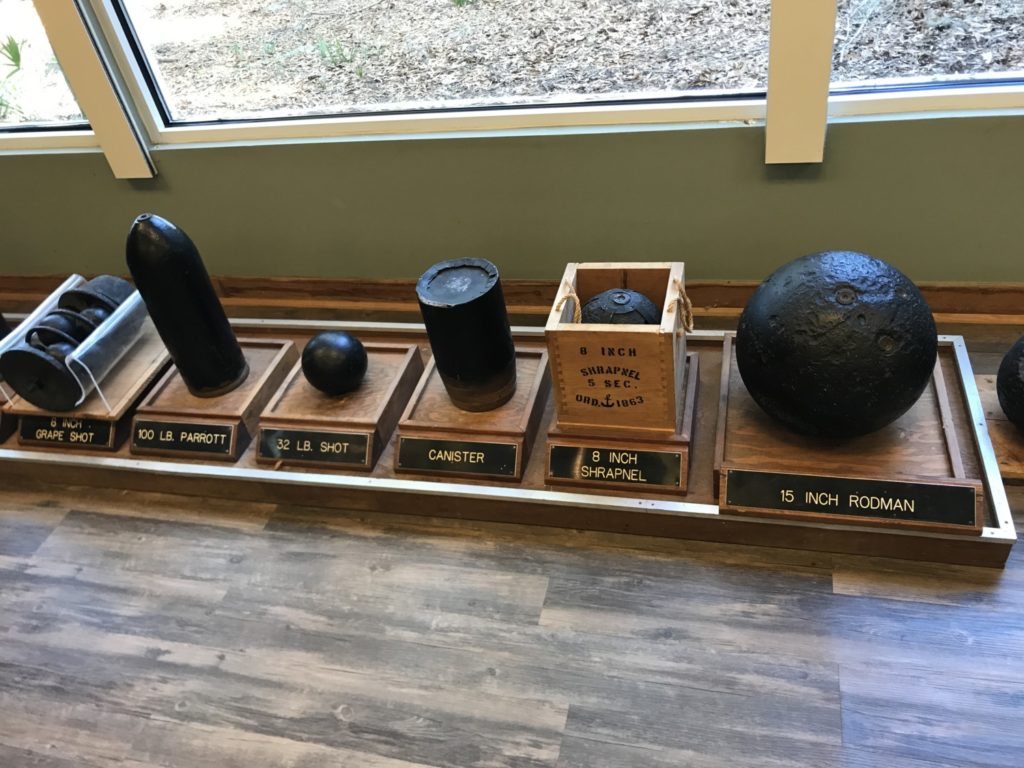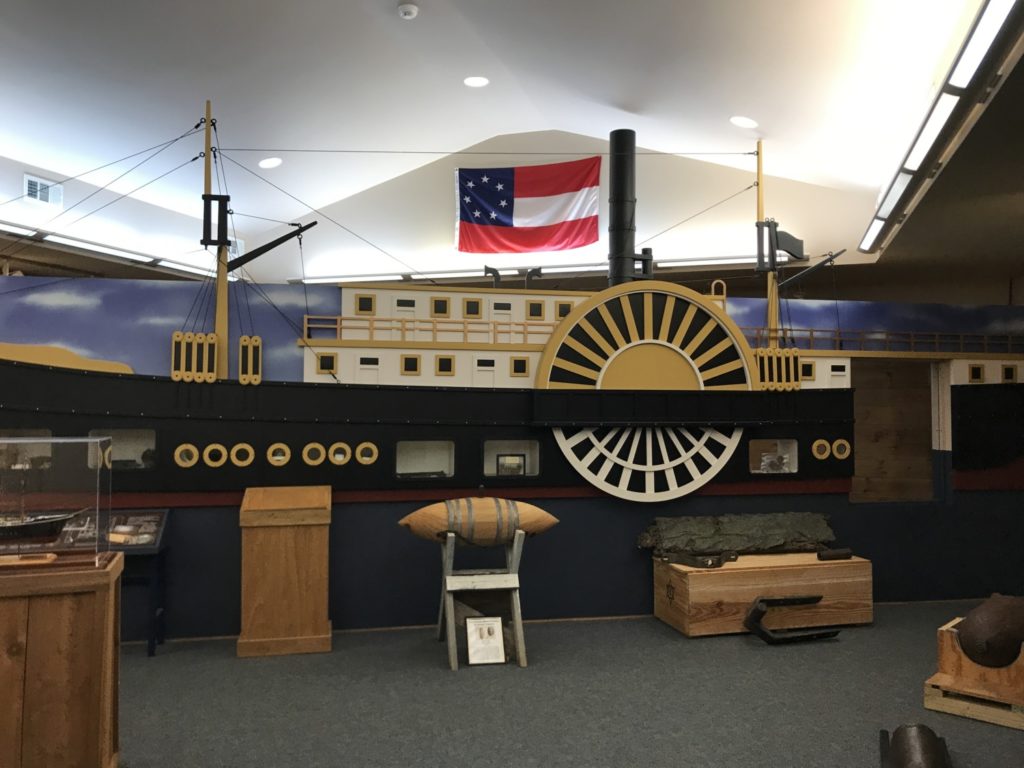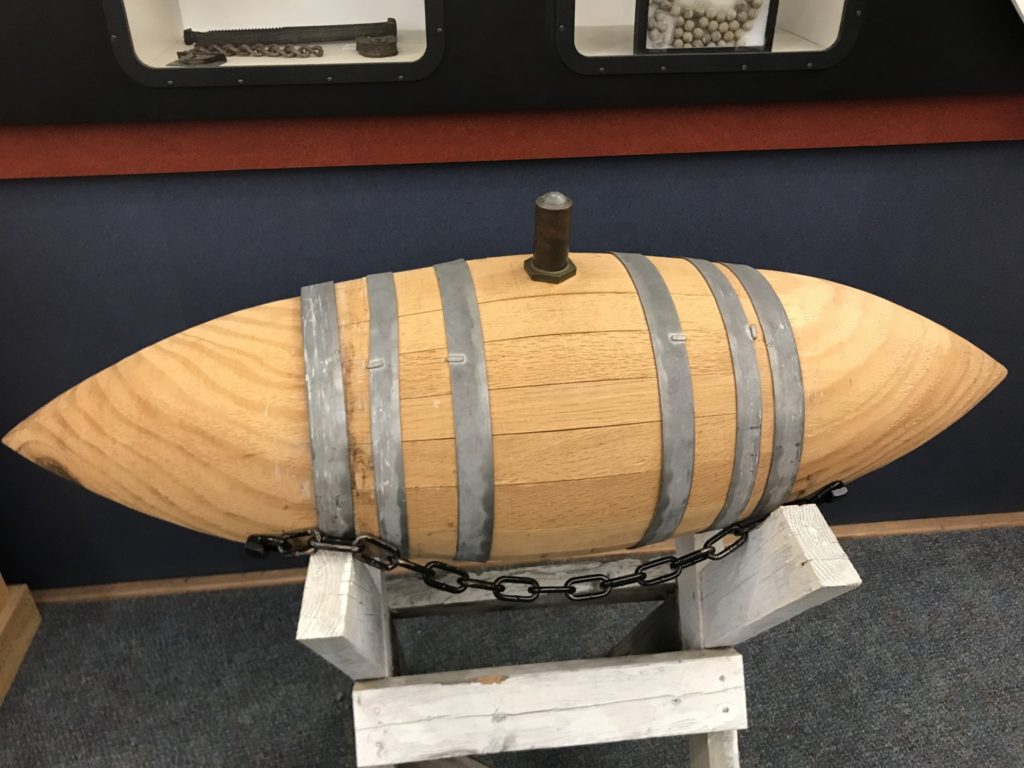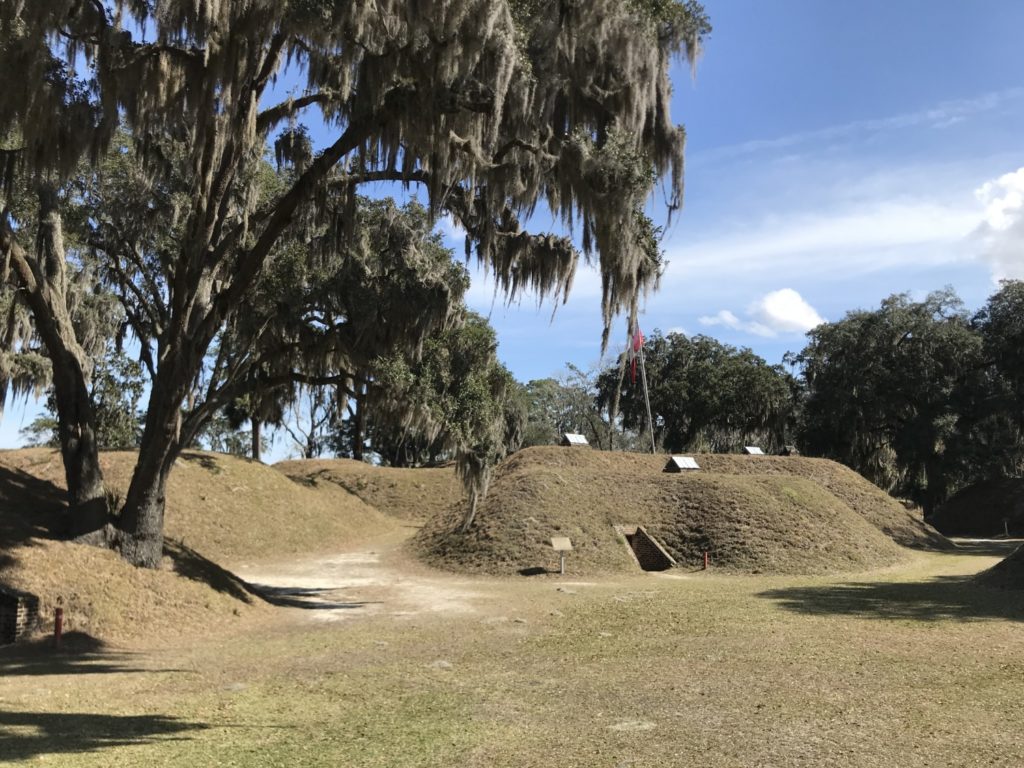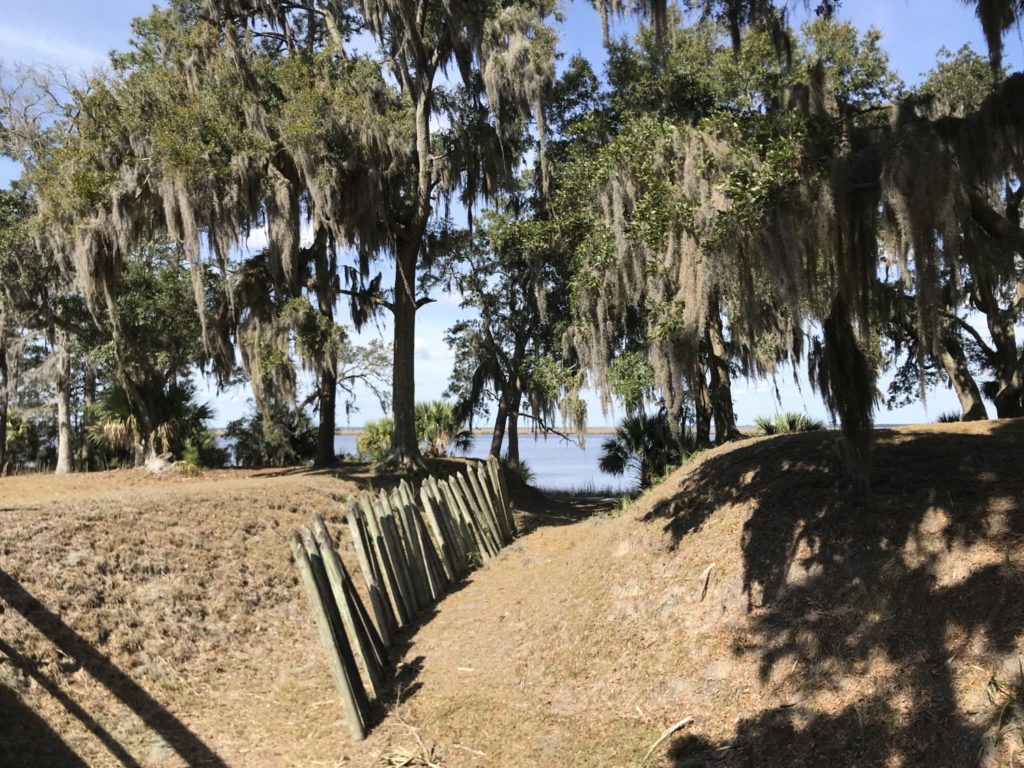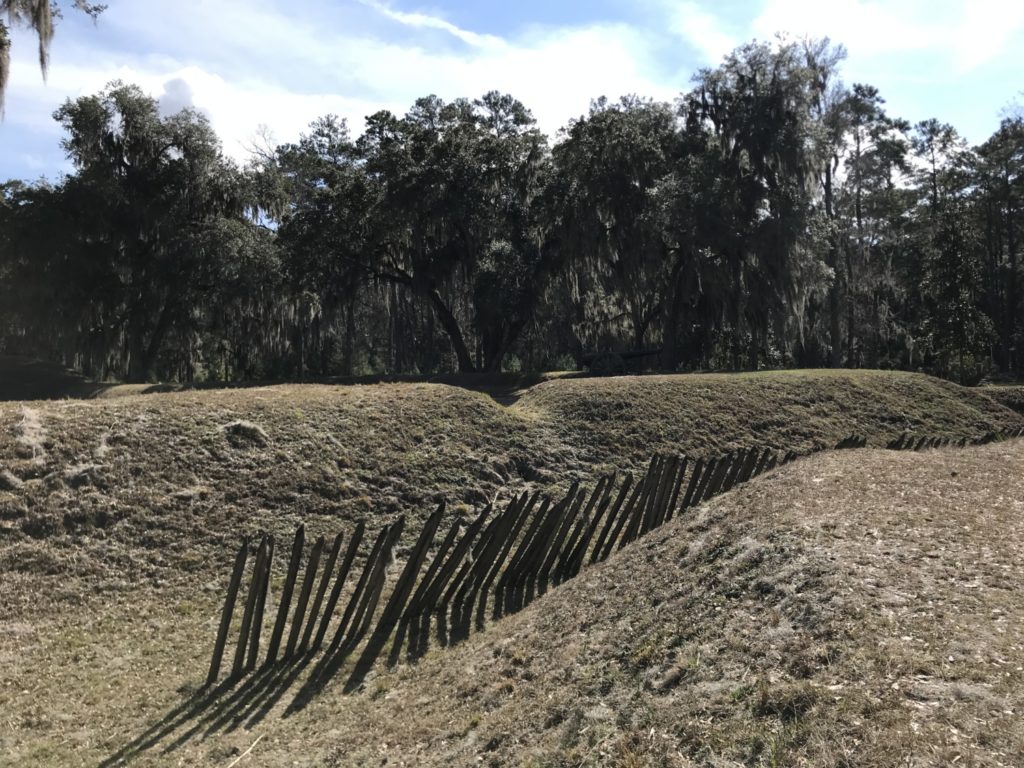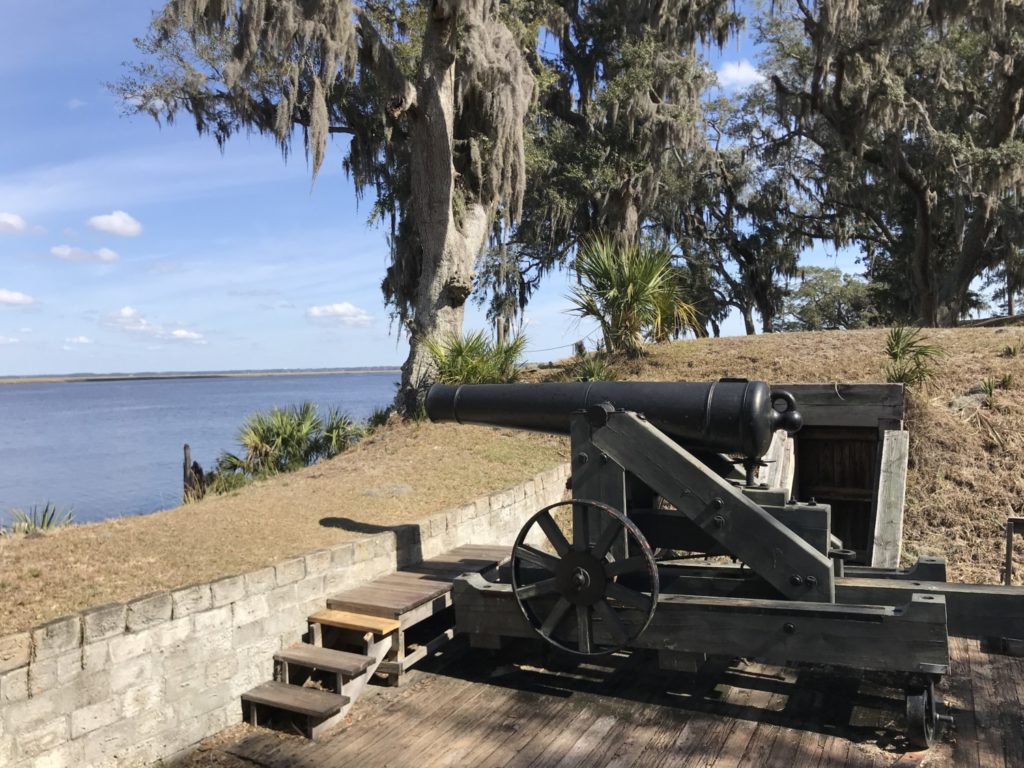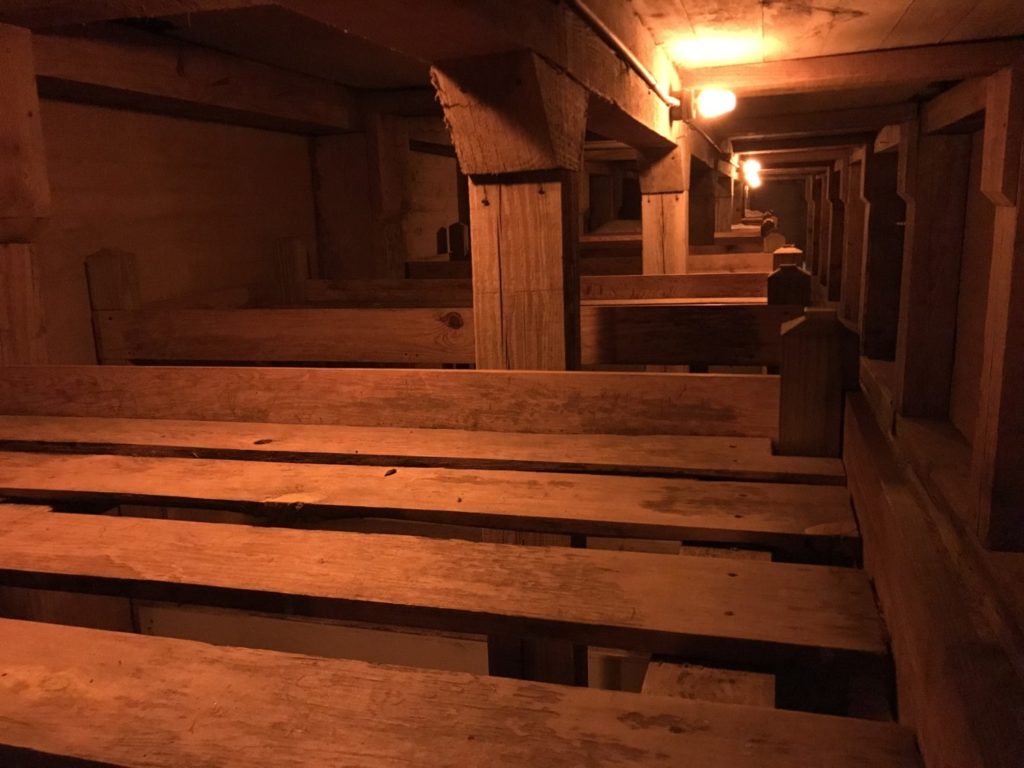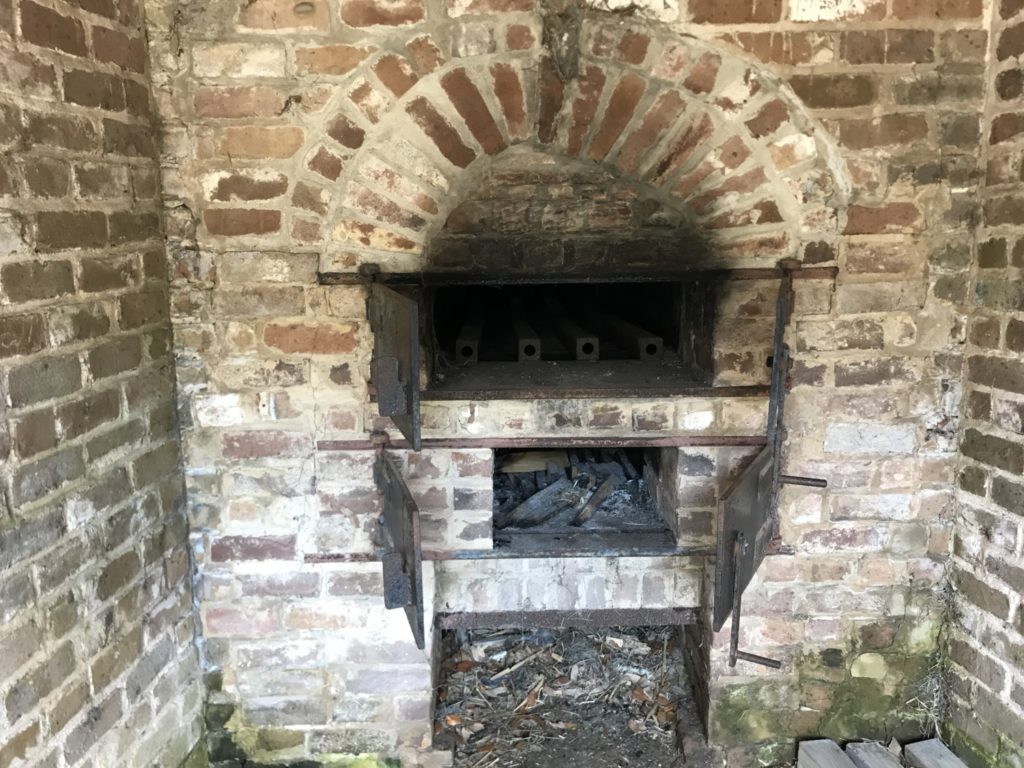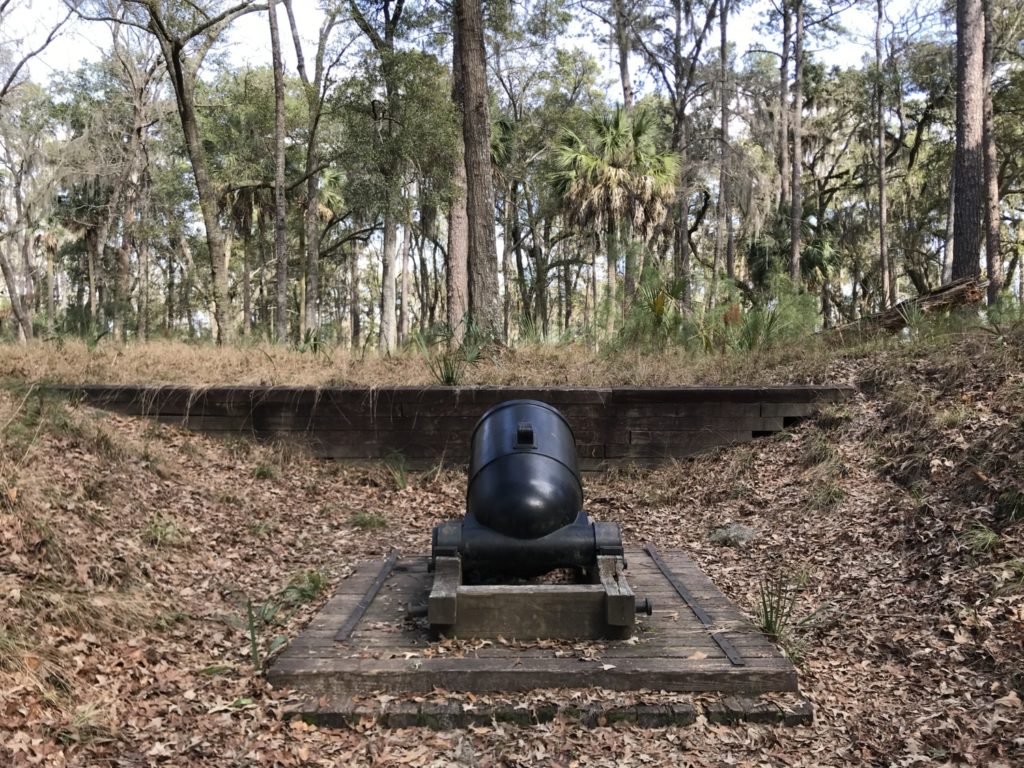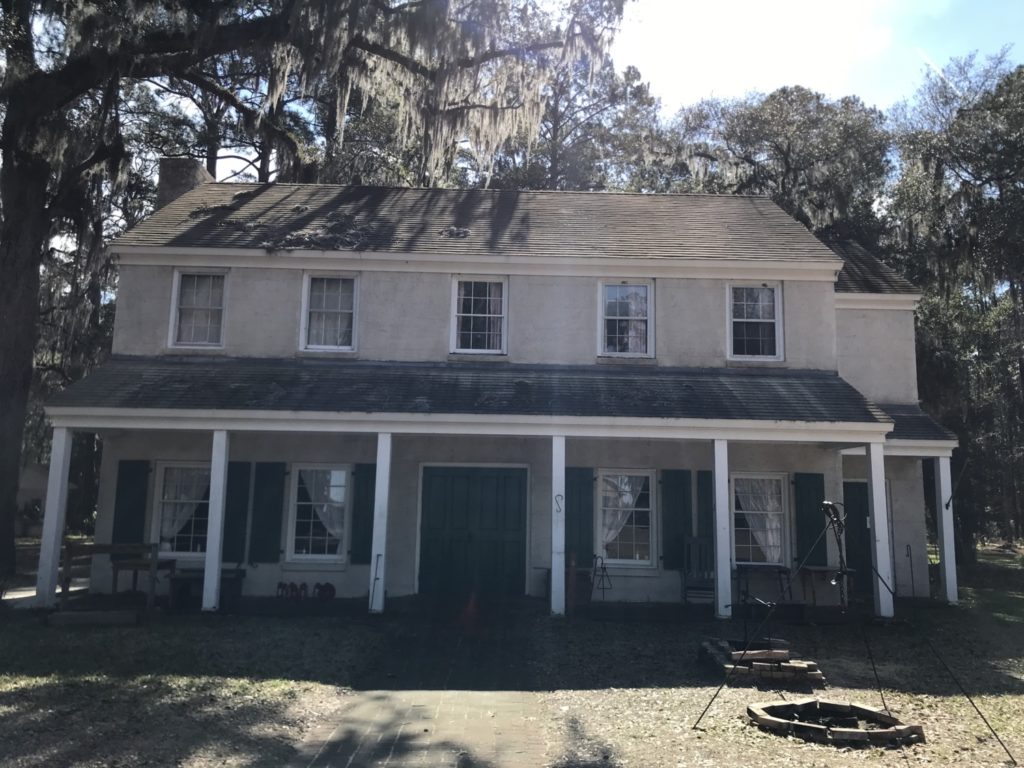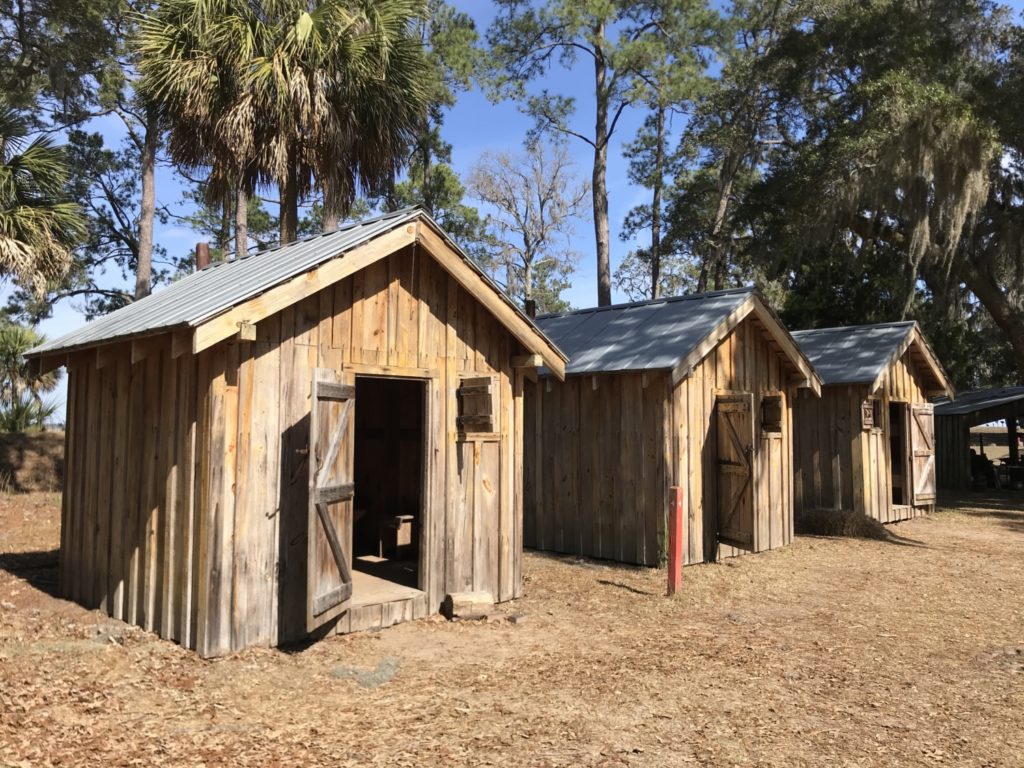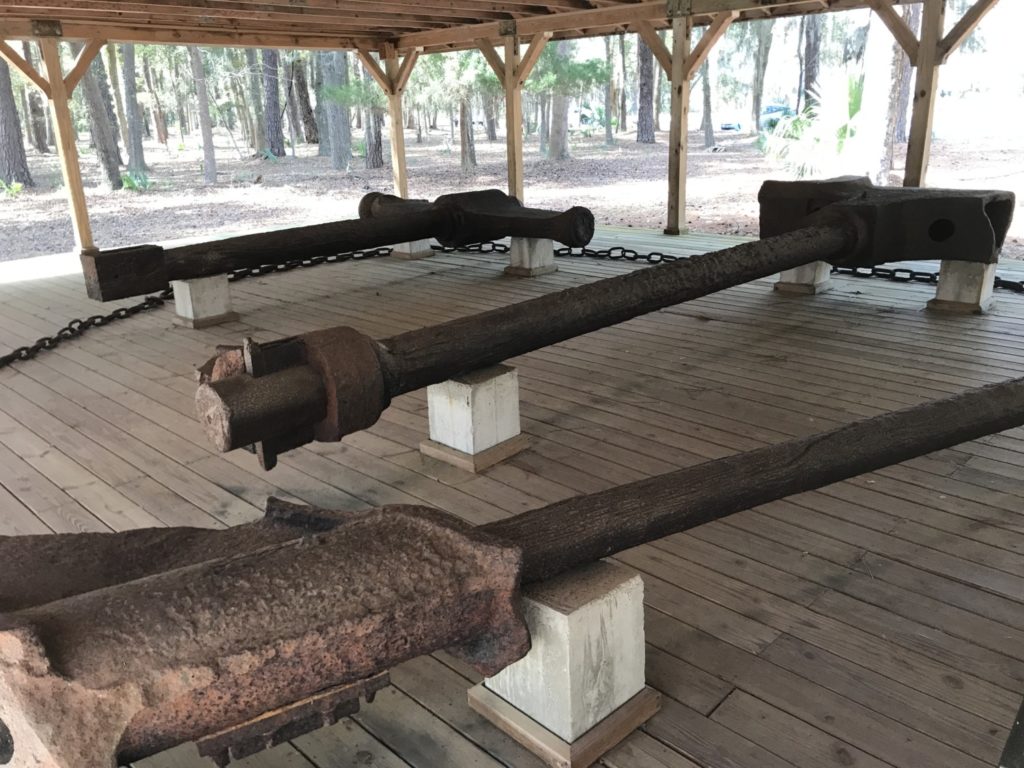Last week, on one of our days off, Tom and I visited Fort McAllister State Park in Richmond Hill, Georgia, near Savannah. Because we have worked at Fort Frederica so many times, we need to go further afield to find new things to explore. Although we have driven by the exit for Fort McAllister many times, we had never stopped. When we finally did, we were pleasantly surprised by how nice it was.

Fort McAllister State Park is a beautiful park located on the south bank of the Ogeechee River. There is a large campground, but Tom and I went for the history. We headed to the Visitors Center first and paid our admission, which was $8 each with the Senior discount. Then we watched the short park film about the use of the fort during the Civil War.

Fort McAllister is the largest and best-preserved earthwork fort built by the Confederacy during the Civil War. The fort was part of the defenses of Savannah. The fort was under almost constant attack by Union ships which were trying to stop blockade runners. But the earthworks proved to be a better defense against the Union cannons than the brick forts in other sites.
The fort had seven cannon emplacements. The bombproof area in the center housed a hospital, supply area, barracks, officer’s quarters, gun power, and additional guns. A 10-inch mortar was kept outside the fort to keep it from shaking the dirt off the walls when it was fired.
The fort was attacked seven times by ships over the next two years. The fort withstood all of these attacks with only minimal damage and few casualties. Union ironclad monitors began to attack the fort on January 27, 1863. The ironclads bombarded the fort for 5 hours but caused no casualties and little damage because the earth absorbed the artillery shells and the damage was easily repaired. Similarly, the fort’s cannons hit the ironclad 15 times but caused no significant damage. Over the next two months, the fort was repeatedly attacked but there was little damage.
On December 13, 1864, Gen. William T. Sherman reached the fort on his March to the Sea. Gen. William B. Hazen‘s infantry division attacked the fort, defended by Maj. George Wayne Anderson and some 230 troops. The Union force overpowered the fort’s defenders in about 15 minutes of battle. This was the last battle in Sherman’s successful March to the Sea.
In the late 1930s, Henry Ford bought the property and began restoring it. The International Paper Company purchased the property from Ford’s estate and gave it to the State of Georgia in 1958. The Georgia Historical Commission continued to restore the fort to its 1863-64 appearance. The fort was listed on the National Register of Historic Places in 1970.
Today the fort is beautifully restored. We wandered around the grounds on a self-guided tour, following the numbers and descriptions in the park brochure. One of the most haunting areas was the bunkhouse and hospital in the same underground bunker. Several of the bunks had bedding on them and it was easy to imagine a person lying on them. There were some restored bunkhouses outside the fortifications and the McAllister house was restored, although closed on the day we were there.
We climbed the observation tower and walked around the fort, enjoying a beautiful day along the river. I was especially impressed by the timeline and the artifacts in the museum. It was an interesting outing to a carefully restored fort.

